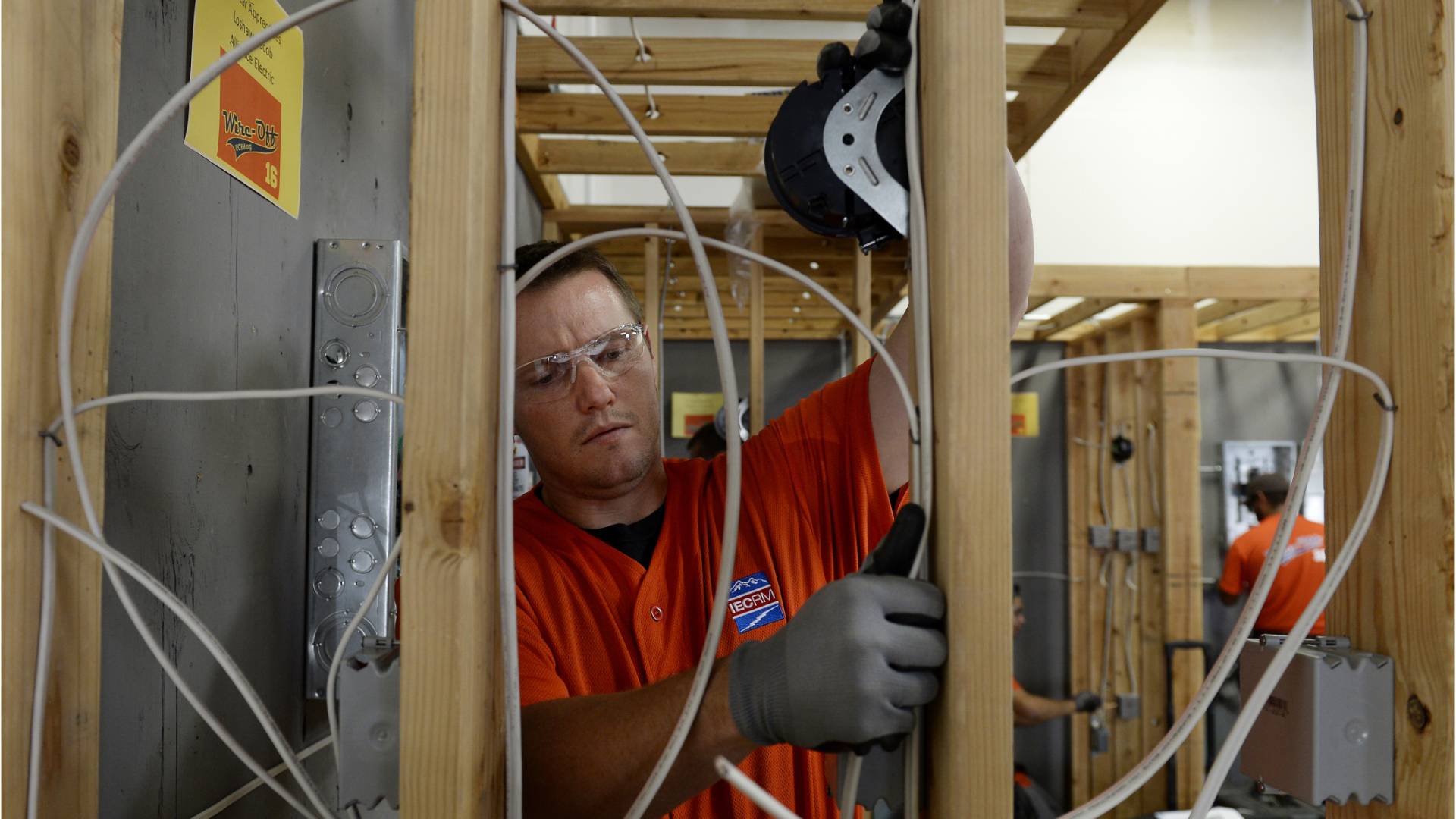Electricians
Electrician, Industrial Electrician, Inside Wireman, Maintenance Electrician
What they do:
Install, maintain, and repair electrical wiring, equipment, and fixtures. Ensure that work is in accordance with relevant codes. May install or service street lights, intercom systems, or electrical control systems.
On the job, you would:
- Prepare sketches or follow blueprints to determine the location of wiring or equipment and to ensure conformance to building and safety codes.
- Place conduit, pipes, or tubing, inside designated partitions, walls, or other concealed areas, and pull insulated wires or cables through the conduit to complete circuits between boxes.
- Work from ladders, scaffolds, or roofs to install, maintain, or repair electrical wiring, equipment, or fixtures.
Knowledge
Engineering and Technology
- building and construction
- mechanical
Business
- management
- customer service
Math and Science
- arithmetic, algebra, geometry, calculus, or statistics
Skills
Basic Skills
- listening to others, not interrupting, and asking good questions
- talking to others
Problem Solving
- noticing a problem and figuring out the best way to solve it
People and Technology Systems
- thinking about the pros and cons of different options and picking the best one
- figuring out how a system should work and how changes in the future will affect it
Abilities
Hand and Finger Use
- put together small parts with your fingers
- keep your arm or hand steady
Ideas and Logic
- notice when problems happen
- make general rules or come up with answers from lots of detailed information
Verbal
- listen and understand what people say
- communicate by speaking
Attention
- pay attention to something without being distracted
Personality
People interested in this work like activities that include practical, hands-on problems and solutions.
They do well at jobs that need:
- Attention to Detail
- Self Control
- Dependability
- Adaptability/Flexibility
- Integrity
- Initiative
Technology
You might use software like this on the job:
Word processing software
- Microsoft Word
- Socrates Contractor's Library
Analytical or scientific software
- Construction Master Pro
- SoftEmpire Electrical Calculations
Data base user interface and query software
- Database software
- Shafer Service Systems
Education
Education: (rated 3 of 5)
certificate after high school or
high school diploma/GED
usually needed
high school diploma/GED
usually needed
Job Outlook
Bright
New job opportunities are very likely in the future.
Explore More
- Electrical & Electronics Installers & Repairers, Transportation Equipment
- Electrical Power-Line Installers & Repairers
- Helpers--Electricians
- Lighting Technicians
- Plumbers, Pipefitters, & Steamfitters
You might like a career in one of these industries:
See more details at O*NET OnLine about electricians.





